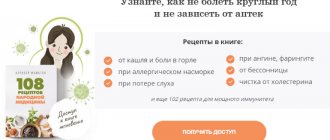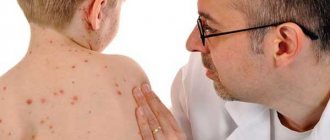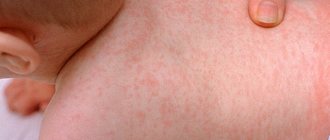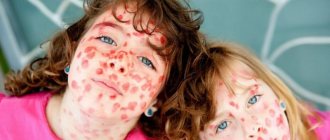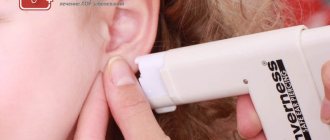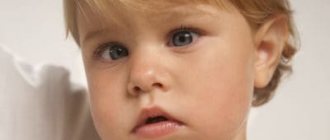Chickenpox belongs to the category of childhood diseases that a person must suffer at a young age.
It usually occurs between the ages of 2 and 6 years, after which the body develops strong immunity.
But sometimes older or very tiny patients become infected with this disease, and in these cases it is much more severe.
So, what is the danger of chickenpox in infants and newborns, and what do parents need to know?
Do infants and newborns get chickenpox?
Can a newborn get chickenpox?
Chickenpox in children under one year of age occurs in several cases:
- if the mother does not have immunity to the disease (the woman passes her immunity to the baby through breast milk), and the child has been in contact with the carrier;
- if a woman suffered from chickenpox immediately before giving birth, immunity has not yet formed in her body, the baby is already born sick;
- Sometimes children who are bottle-fed become infected with chickenpox.
In any of the above situations, the disease is severe and is accompanied by serious complications due to an imperfect immune system.
Breastfeeding (if the mother has immunity) will help protect a newborn from chickenpox. During the first three months, children who received antibodies through milk do not become infected even after contact with sick people. Subsequently, the risk increases slightly.
How long does chickenpox last in a child?
An infection such as chickenpox in children (the incubation period, how many days it lasts, depends on the state of the baby’s immunity) is characterized by an acute onset. At the same time, doctors record the interval when the baby is absolutely healthy.
Its duration varies from 4 to 21 days. Entering the body through the respiratory tract, the pathogen gradually settles in the nasopharynx, where it takes root and begins its active activity. Over time, toxins accumulate and enter the bloodstream, triggering the onset of the disease, which lasts on average up to 14 days.
Symptoms
Chickenpox in children under one year of age occurs differently, depending on the intensity of the disease and the presence or absence of antibodies in the body.
The congenital form (begins no later than 11 days after birth) begins abruptly, with high fever, vomiting, and sometimes convulsions.
The baby refuses to breastfeed, becomes lethargic and capricious, or, conversely, too excitable.
After a few days of such symptoms, rashes characteristic of the disease appear, and in difficult cases they can cover the baby’s body very thickly, including not only the skin, but also the mucous membranes, genitals, and eyelids.
The erased picture of the disease is characterized by low fever, headache, runny nose, general malaise, and papules appear later. Sometimes the disease begins with the appearance of a rash, which is considered a good sign, since in this case chickenpox is easy to recognize and appropriate treatment can be started.
In order to identify chickenpox in time, parents need to know what papules look like. They resemble small spots that may rise slightly above the skin. After some time, a bubble with transparent contents up to 3 mm in diameter appears in their center, around which there is slight redness.
Rash on a child's face
The appearance of rashes has a wave-like character - at first single papules appear, then there are more of them. After some time (1-3 days), the bubbles burst and form crusts, which in turn dry out and fall off. With a mild form of the disease, this process takes about 5 days, with a severe form – up to two weeks.
A person with chickenpox is contagious for about 7-10 days - two days before the first elements of the rash appear and 5-7 days after.
Chickenpox symptoms
Chickenpox usually has an acute onset.
A complex of symptoms immediately appears:
Weakness
Weakness is a symptom of intoxication.
More about the symptom
Temperature
The temperature rises and can remain around 38°C for the entire period while new rashes appear. In some children, at the onset of the disease the temperature can reach 39-40°C
More about the symptom
Rash
Rashes are found throughout the body, including on the scalp, mucous membranes, and even (in exceptional cases) on the palms and soles. At first they look like pink or red round spots . Then bubbles appear. After 2-3 bubbles dry out and crusts form in their place. The rash usually lasts for 5-10 days; therefore, elements at different stages may be present on the body at the same time.
More about the symptom
How dangerous is chickenpox in infants?
Let's find out whether chickenpox is dangerous for infants. Chickenpox, especially its severe forms, is extremely dangerous for infants, especially for babies under 3 months. Complications of the disease include:
- damage to the central nervous system and internal organs;
- false croup and suffocation due to dryness of the larynx;
- approximately 1/3 of babies under the age of one year die from chickenpox.
Only a specialist can diagnose chickenpox in infants - the diagnosis is made based on a survey of the mother and examination of the skin. In controversial cases, a blood test may be prescribed for a young patient.
Block 1
Complications
The pathogenic influence is exerted both by the pathogen itself and by the immune response to its introduction. Chickenpox in newborns can cause:
- damage to the respiratory system (inflammation of the trachea, pneumonia, respiratory failure);
- diseases of the organs responsible for removing toxins from the body (kidneys, liver);
- diseases of the nervous system (meningoencephalitis, cerebral edema, muscle paralysis);
- heart and blood vessel diseases;
- pathologies of connective tissue of muscles and joints.
Chickenpox is dangerous in the prenatal period of fetal development. In 1-3% of cases, the virus causes developmental pathologies:
- eye;
- limbs;
- brain;
- skull bones.
When the eyes are affected by chickenpox, conjunctivitis, keratitis, and decreased visual acuity develop.
Treatment
Treatment of chickenpox in severe form is carried out in a hospital setting, and it is better for children under 3 months to go to the hospital even with a mild form of the disease.
No special therapeutic methods are used in this case, and all measures are aimed at combating symptoms, preventing the spread of the rash and suppuration of the blisters.
- To reduce the temperature, small patients are prescribed Ibuprofen and Paracetamol in the form of suspensions or rectal suppositories. You should not overuse antipyretics - at a temperature of 37-37.5 degrees, viruses in the body die much faster, so you should give them to your baby only when the thermometer shows 37.5-38 or higher.
- To help the body cope with the disease, infants may be prescribed antiviral drugs - for example, Viferon.
- To dry the blisters, they must be lubricated with brilliant green, a solution of potassium permanganate, fucorcin or Fenistil gel, which not only treats rashes well, but also relieves itching. It is best to lubricate the skin not with a cotton pad, but with clean hands, since cotton wool fibers can spread infection throughout the body. It is recommended to treat rashes about twice a day - overuse of brilliant green can lead to an imbalance on the surface of the skin, which causes scars to form on it.
- The baby's nails should be cut short, and special shirts should be put on his hands so that he does not scratch the rashes on his body, otherwise a bacterial infection may join the viral infection.
- It is not recommended to overfeed a child or force him to eat food if he has chickenpox. Breastfed babies should be given breastfeeding on demand, and those who have already given up breast milk need warm drinks to remove toxins from the body.
- Hygiene is very important for a quick recovery. The child needs to change clothes and diapers as often as possible, and they should be immediately washed in hot water and ironed. To make the baby more comfortable, parents should avoid wearing too tight and synthetic clothing and give preference to cotton clothing.
- A baby with chickenpox should be examined regularly by a doctor to rule out possible complications.
You should not bathe your child during the period of chickenpox, as the infection can spread throughout the body along with the water. In addition, due to moisture, rashes take much longer to dry. The baby's folds can be wiped with a damp towel and sprinkled with talcum powder.
How does chickenpox manifest in infants?
Of course, the first sign of chickenpox in a child under one year old is a skin rash . The disease has a wave-like character - that is, rashes appear in batches, and there may even be relief, followed by a deterioration in the baby’s condition.
With a mild form of chickenpox, the symptoms in children under one year old look like a rash that alternately intensifies and subsides. The rash is accompanied by a slight fever , which increases as the rash spreads. However, the temperature may not rise if the rash is local.
The rash begins as small red spots, which transform as the disease progresses into clear, fluid-filled blisters with a red halo around it. When the blisters burst and dry out, crusts called scabs form on the surface of the skin. The child's behavior during this period is characterized as capricious, restless, and irritable.
There are certain nuances of infection and the course of the disease in infants.
Not surprising, because even a mild form of chickenpox in children under one year of age provokes severe itching , which interferes with normal sleep and reduces appetite. It is easiest for babies who are breastfed at this time to suffer from the disease.
Babies receiving complementary feeding may refuse fruit puree or juice. There is no need to insist. It's better to just breastfeed your baby whenever he wants.
And don't forget to drink. It is much more difficult for artificially fed children, as sometimes they cannot eat at all. Mom needs to know that if you have chickenpox, you can’t force-feed your baby. It is better to give him water, unsweetened compote or very weak tea.
Unfortunately, a severe form of chickenpox also occurs in children under one year of age. It is usually very difficult to alleviate this condition on your own. The first symptoms of this form are a temperature of about 40° and refusal to eat .
Many mothers do not understand what is happening to the child and are very worried. Only the next day, when a profuse rash appears, does the picture become clearer. This form also flows in waves. With severe chickenpox, a child's larynx and sinuses may become dry, sometimes leading to choking and false croup .
Of course, only a specialist can identify chickenpox in a child aged 1 year and determine the form of the disease. Therefore, at the first signs, it is necessary to call an ambulance and not resist hospitalization if the doctor insists on it.
Diagnosis is half the treatment
Parents usually suspect chickenpox if a rash is present, but doctors need a more complete picture. Therefore, the doctor will ask the mother in detail how the child behaved in the last couple of weeks, whether there were any contacts with those infected with the chickenpox virus.
Perhaps you and your baby were in the epicenter of the epidemic - a hospital, kindergarten, sanatorium, among other children or adults suffering from chickenpox. In most cases, examining the skin and interviewing the mother is sufficient to make a diagnosis.
In controversial cases, the doctor may prescribe a serological blood test or electron microscopy of the virus taken from the patient’s tissues. But, more often than not, everything ends with a visual inspection.
Features of treating children
For chickenpox in children under one year of age, no special treatment is required. The pediatrician prescribes complete rest, plenty of fluids and antipyretic medications. To relieve itching, Fenistil drops can be used for children from one month of age. The dosage usually coincides with the number of months the baby has lived - at 3 months - 3 drops, at 6 months - 6 drops, etc.
To dry the blisters, you can use brilliant green in the old fashioned way or smear the rash with Fenistil gel. The gel is applied locally; it is advisable not to cover healthy skin with it and use only a clean finger and not a cotton swab for application. The fibers of a tampon can easily spread infection throughout the epidermis.
Parents can also use the antiseptic Calamine Lotion, which is widely used in the West. The lotion not only reduces itching and cools the skin, but also reduces the risk of scarring.
To reduce the temperature, Paracetamol is usually prescribed, which can be used both in the form of tablets and in the form of rectal suppositories. The second form has great advantages, since it is very difficult for small children to give medications orally, and suppositories can be administered even during sleep.
Please note that it is advisable not to use these drugs at temperatures below 38-38.5°C. Do not take ibuprofen for chickenpox. The medicine can cause serious complications.
It is very important to ensure that the little one does not scratch himself, tearing the blisters and contributing to the spread of the rash over healthy skin. To do this, you need to put a vest and scratches on the baby. It is unlikely that a child suffering from itching will like this.
But you need to take care of your recovery first. So parents need to be patient and not get irritated by the whims of the baby, who is already having a hard time. Try with all your might to calm and support the baby, as a peaceful state contributes to a speedy recovery.
In addition, it is necessary to carefully observe personal hygiene measures - often change diapers, rompers and undershirts, after ironing them with a hot iron.
Children who are already eating complementary foods need to consume more fermented milk products, fresh pureed vegetables and fruit and berry juices.
What not to do during treatment
Of course, every mother wants to alleviate the condition of her child as quickly as possible. But recovery will not come sooner than it should if you abuse ointments and medications.
Do not think that the more often you treat the wounds with brilliant green, the faster the rash will disappear. The brilliant green solution does not kill the chickenpox virus, but only dries out inflammation and disinfects.
Abuse of brilliant green can lead to an imbalance of beneficial and harmful microorganisms on the surface of the epidermis and, as a result, scars will appear.
In addition, if you use a cotton swab or pad, you risk spreading the infection and worsening the rash. But you can’t not treat the skin at all. Try to limit yourself to two procedures per day.
Soviet and many modern doctors insist that chickenpox in a child under one year old is a serious reason not to wash or go for walks . It is known that the chickenpox virus does not survive in the external environment, so the infected baby no longer cares.
A complete refusal of hygiene procedures will also not bring anything good. Try to at least wipe the child’s folds with a weak solution of potassium permanganate or quickly wash him in the shower, and don’t be afraid to use talc.
What absolutely cannot be done when treating chickenpox in children under one year of age is to abuse antipyretic drugs . The doctor must prescribe a daily dose of the medication, exceeding which is strongly recommended.
Also, you should not give your child pills more often than indicated in the prescription. Understand that temperature is a sign that the body is fighting, killing the virus. An overdose of paracetamol is much worse than a temperature of 37.7°C.
Prevention
The best prevention of chickenpox is breastfeeding - in children who have received immunity from their mother, the disease is much easier even if infected.
In addition, it is necessary to limit the baby’s contact with potential carriers of the infection - these include people with herpes on the lips.
One of the most effective preventive measures against chickenpox is vaccination.
Vaccinations are given to children from one year old, so to protect the baby, the mother and all family members who have not had this disease need to be vaccinated, especially if they go to places where they can become infected.
Block 2


